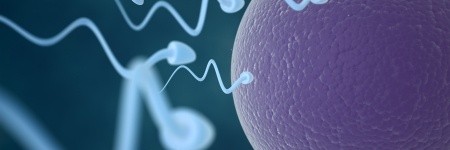Researchers at the National Institutes of Health (NIH) have been conducting experiments that could lead to a new method of long-term contraception, as well as improved in vitro fertilization techniques. These two ends might seem contradictory, but in fact they are quite closely related. It all has to do with the behavior of sperm during ovulation.
When an egg is passed through the fallopian tubes and prepared for fertilization, it’s coated with a peptide called zona pellucida glycoprotein 2 (ZP2) that attracts and binds sperm to the egg. Once one sperm penetrates the barrier it triggers a chemical reaction which prevents other sperm from entering the egg. Sperm cells – particularly the strong, healthy ones – will make a beeline for eggs coated in ZP2.
The researchers at the NIH realized that by coating a decoy egg with ZP2 and implanting it a uterus, they could effectively trick sperm into fertilizing the fake egg, rather than a real one. They made their fake eggs using agarose beads, which are carbohydrate particles commonly used in laboratory testing. Next they implanted the decoy eggs into the uteruses of mice and tested their ability to prevent pregnancy. The results were very promising. The researchers also found that once the fake eggs were removed, the mice were able to quickly resume having healthy pregnancies.
So how could this possible long-term contraceptive option improve in vitro fertilization techniques?
When scientists perform in vitro procedures, they visually inspect individual sperm under a microscope to determine which ones are the best candidates for fertilization. The decoy eggs could serve as a far easier and more reliable tool for vetting the sperm for fertilization. Just place a decoy egg coated in ZP2 in a petri dish with sperm and watch to see which ones latch on first. These sperm will have the best chance of producing a viable embryo.
It’s important to remember that while preliminary test results have been promising, there’s no guarantee we’ll see fake egg contraceptives on the market anytime soon. Just because it appears to be safe and effective in mice doesn’t necessarily mean that it will translate directly to humans. Nevertheless, it’s a promising line of research that could lead to better, safer methods of birth control in the future.

